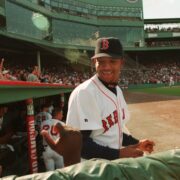Kids say the darnedest things. The come up with the most creative stories and ideas.
Well, what if I were to tell you that a new theory suggests the reason why so many adults lose their creative powers as they grow older is that they’re been trained to forget what made them so creative back then.
Instead, they’re taught to adopt other brain habits that might be easier to explain in schools and business settings, but that aren’t as well suited to the task.
It all comes down to the difference between two distinct ways of thinking through solutions to problems: divergent thinking, and creative thinking. Let’s explore.
Divergent thinking
On the one hand, we have divergent thinking. If you’ve ever been part of a corporate brainstorming exercise, this is what you were doing, neuroscientifically speaking, even if nobody called it that.
- Divergent thinking is “ideational or visionary in nature,” according to Kathryn Haydon, author of, The Non-Obvious Guide to Being More Creative, No Matter Where You Work. “It involves rigorous gymnastics of the mind that lead to unexpected solutions.”
- Random example: Imagine that we need to open a lock, but we don’t have the combination. How can we find a creative solution?
- Well, we could guess the combination. Or we could figure out how to pick it. Or we could break it open with a tool. They’re decent ideas, but they’re spontaneous, non-ordered, and not really building on each other.
Narrative thinking
Compare this way of thinking to narrative thinking. This is the kind of thinking that you’ll watch children do when they’re at their creative peak.
- It’s more about storytelling; each point in the creative exploration sparks a jumping off point for the next one.
- So, how could we open the lock? Well, we could try to guess the combination. Maybe it’s the birthday of the lock-owner? Or else, maybe it’s another date. Maybe it’s the anniversary of his first day at work, or his wedding anniversary. What if we tried one of those?
- I suppose this would be a fairly advanced child — lock-picking and anniversaries and all that — but that deficiency in the story actually makes the point more clear: Narrative thinking involves taking the way that you were instinctively creative as a child, and using it to come up with creative ideas as an adult.
Kids are more creative than adults
Earlier this year, authors Angus Fletcher and Mike Benveniste, who are associated with Project Narrative at The Ohio State University, explained this theory in the peer-reviewed journal, Annals of the New York Academy of Sciences.
In short, they say that while divergent thinking is widely taught, “for decades, concerns have been raised about [its] adequacy.”
But, they point out, while children are “more imaginatively creative than adults,” there is a clue that suggests they don’t use divergent thinking, because they’re not as good at two key elements of that mode of thinking: “memory and logical association.”
It makes sense; kids just don’t have the experience and data to think through problems that way. But, they’re still highly creative, because narrative thinking works so much better.
The deficiency in divergent thinking is that it cannot “help prepare people for new challenges that we know little about,” Fletcher argued. “It can’t come up with truly original actions. But the human brain’s narrative machinery can.”
Teaching new tricks to old soldiers
It sounds great in theory. But has anyone actually tested it, or come up with a way to teach adults in positions of responsibility how to think narratively in order to become more creative?
In fact, Fletcher and Benveniste have been using exactly this approach to train senior military officers at the U.S. Army’s Command and General Staff College, along with executives at Fortune 50 companies.
As examples, they encourage students to use the kind of techniques that writers use in order to create stories — literally to imagine developing new worlds in your mind.
Or else, they try perspective-shifting: “An executive at a company might be asked to answer a problem by thinking like another member of their team.”
Accurate predictions aren’t really the point, Fletcher said. “It’s about making yourself open to imagining radically different possibilities.”
Train for creativity; don’t hire for it
Fletcher and Benveniste say there’s another benefit to this kind of thinking for business leaders and others who have to assemble teams.
If narrative thinking can make anyone into a more creative person, it means there’s less need to look for creativity as trait, when recruiting and hiring.
“It’s better to hire a diverse group of people and then train them to be creative,” Fletcher said. “That creates a culture that recognizes that there are already creative people in your organization that you aren’t taking advantage of.”
As I write in my free e-book Neuroscience: 13 Ways to Understand and Train Your Brain for Life, there’s nothing more fascinating or useful than learning about the unexpected ways in which the human brain works.
And I love the idea that this is how we might train our brains to be more creative.
“We are obsessed with the idea that some people are more creative than others,” Fletcher said. “But the reality is that we’re just not training creativity in the right way.”











Comments